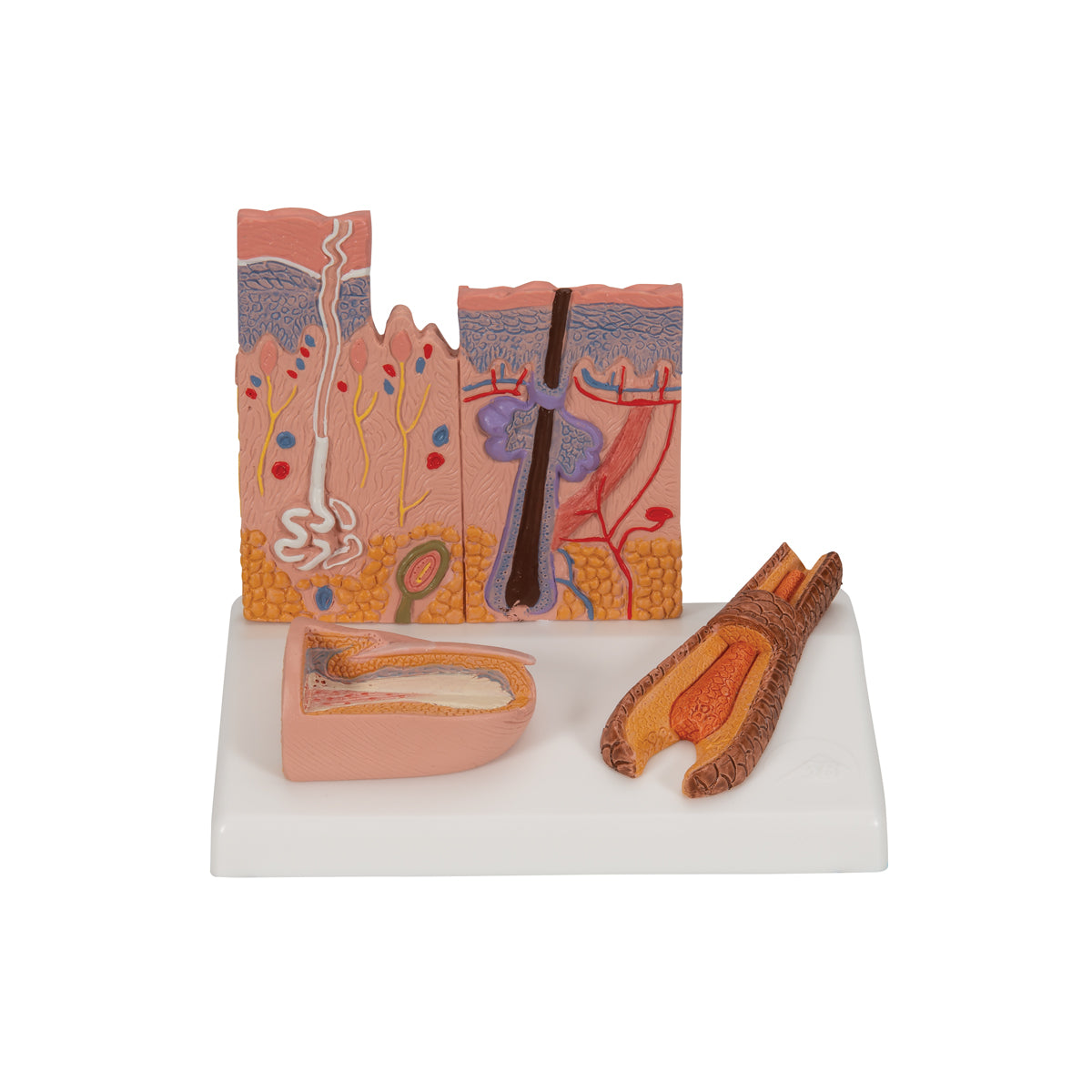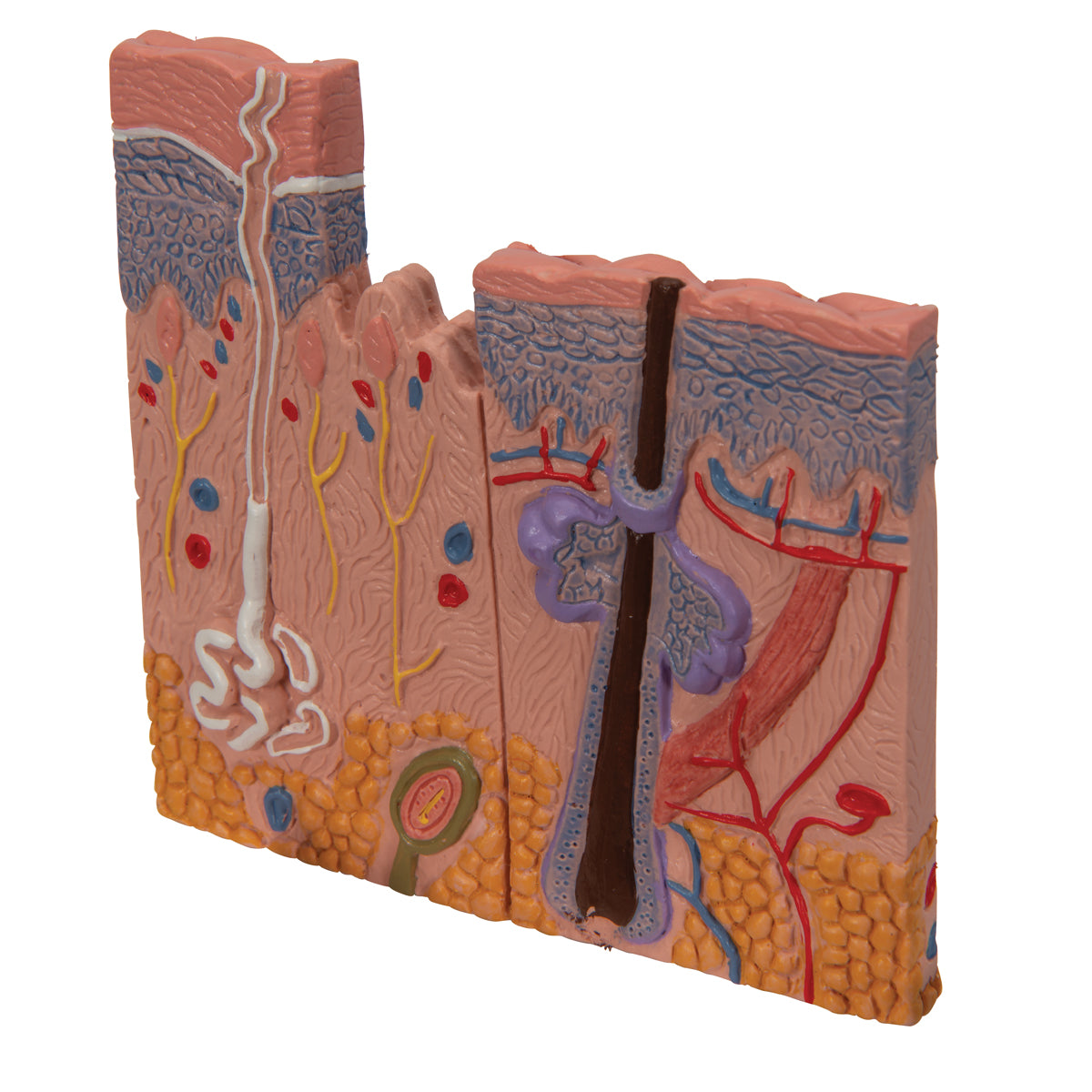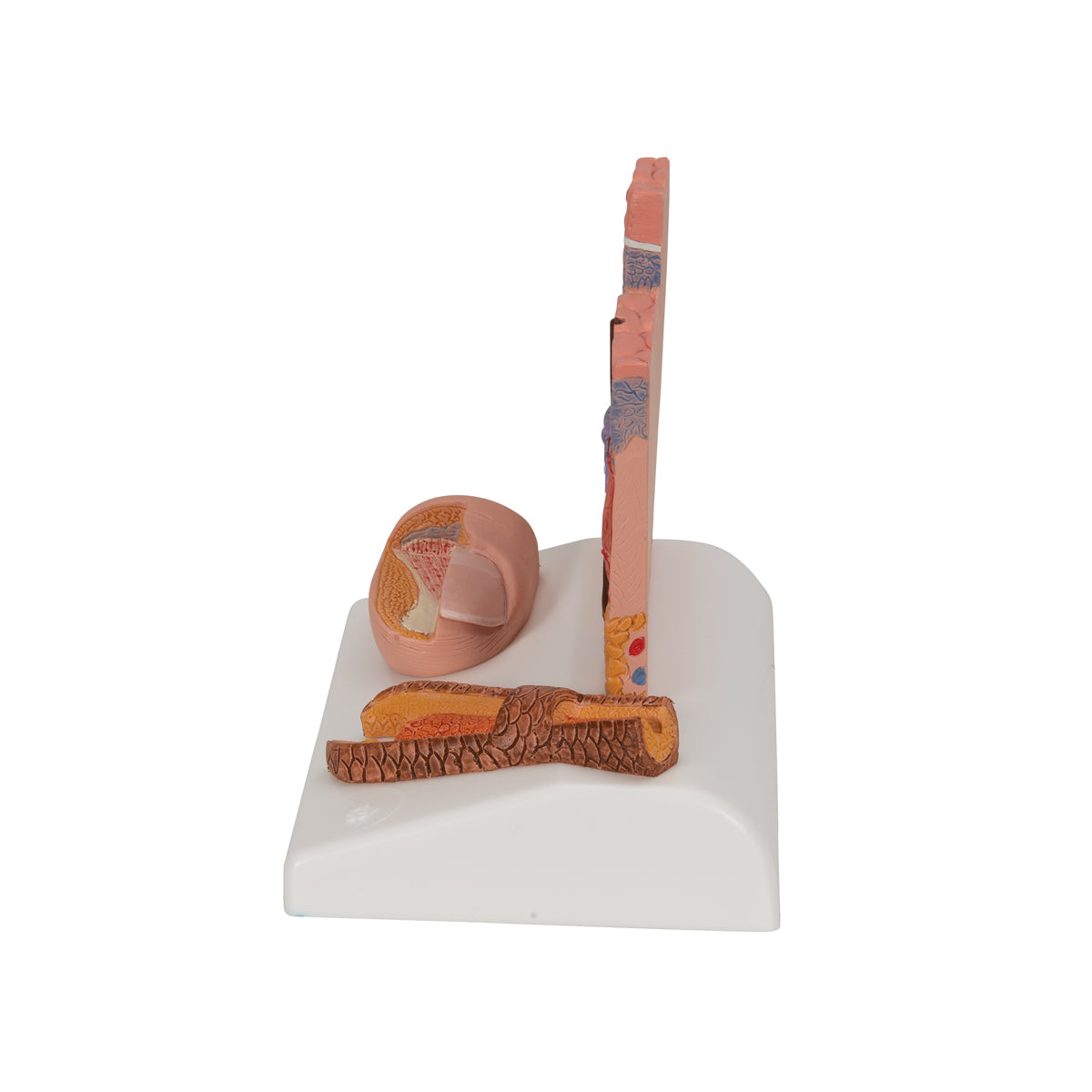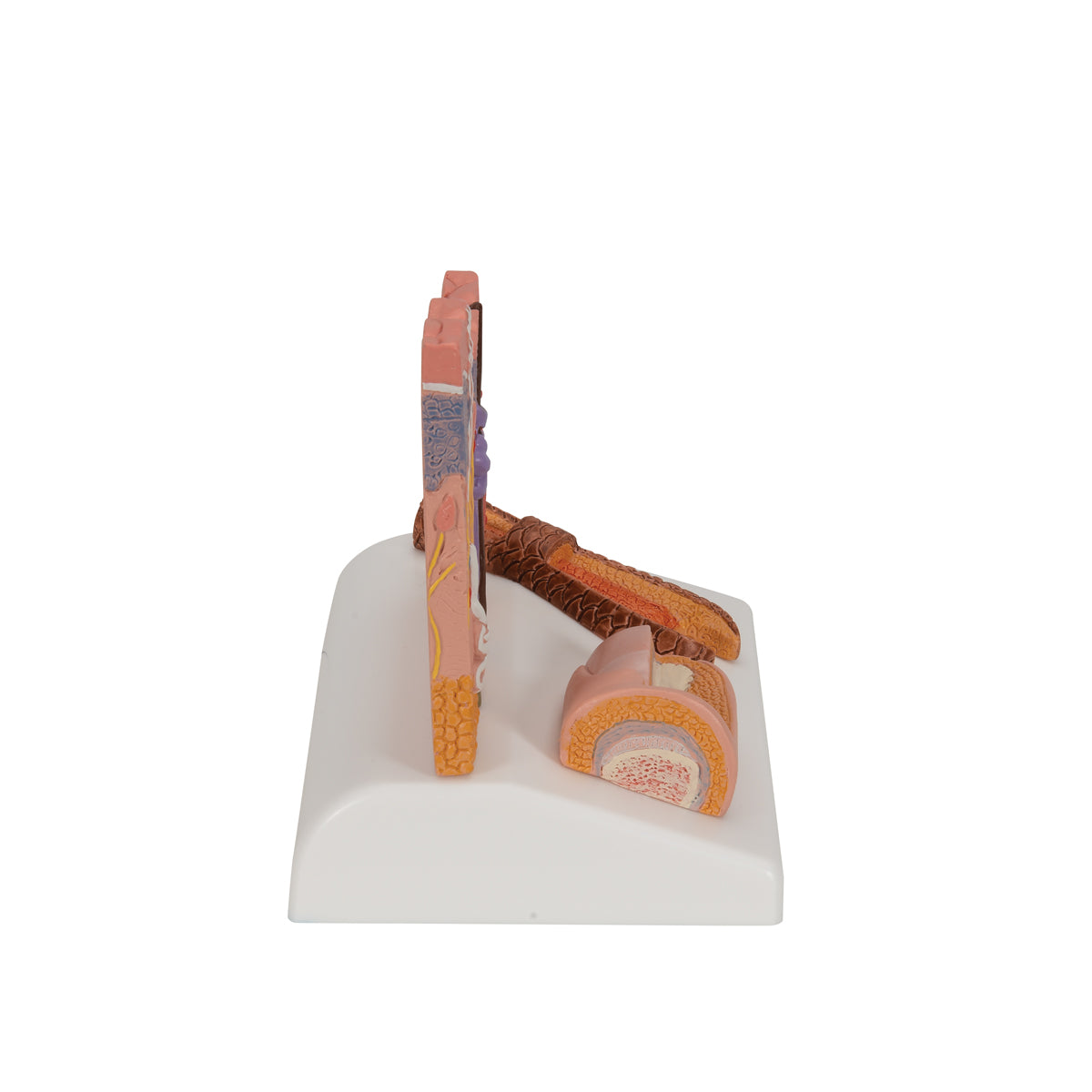SKU:EA1-1000292
Skin model of 2 skin areas, a nail and a hair root assembled on a stand
Skin model of 2 skin areas, a nail and a hair root assembled on a stand
Low stock: 1 left
Couldn't load pickup availability
This model is a package solution, which consists of the following parts:
- A segment showing the skin layers from 2 skin areas (incl. encapsulated nerve endings)
- A segment showing a root of hair
- A segment showing a nail and the nail bed
The model weighs 0.33 kg and measures 10 x 12.5 x 14 cm. All 3 above-mentioned segments/parts are delivered together on a stand (white plastic sheet).
An overview has been made in Latin, English and several other languages (but not Danish), where the anatomical structures of the model are named via pictures and lines. You can download and print the overview via our website - look under the product images on the left.
Anatomical features
Anatomical features
Anatomically, the model shows the following:
1) A relatively large segment showing the skin's 2 layers, which are the epidermis and dermis. The skin (subcutis) is also seen.
The epidermis consists primarily of keratinocytes, and the model clearly shows the layered structure, which is due to the displacement of these cells upwards towards the skin surface (seen both in the different shapes and colors of the cells). Furthermore, the basement membrane can be seen at the bottom.
The thick connective tissue layer with blood vessels, hair follicles with attached smooth muscle (m. arrector pili) and sweat and sebaceous glands can be seen in the dermis. Furthermore, encapsulated (afferent) nerve endings are seen in the form of Meissner corpuscles and Pacini corpuscles.
A bit of the subcutaneous tissue is also shown in yellow at the bottom, which symbolizes fat cells (as the subcutaneous tissue mainly consists of fat cells)
2) A smaller segment showing a hair root with medulla, cortex and hair cuticle. The hair follicle (hair follicle) is not seen.
3) A smaller segment showing a bit of a nail, the nail bed and related tissues such as fat and bone tissue.
Product flexibility
Product flexibility
Clinical features
Clinical features
Clinically speaking, the skin model can be used to understand skin disorders and skin diseases such as psoriasis, folliculitis, acne and skin tumors. It can also be used to understand nail diseases and nail changes.
Furthermore, it can be used to understand other things, such as burns, which are traditionally divided into degrees (1st degree, 2nd degree, etc.).
Share a link to this product





A safe deal
For 19 years I have been at the head of eAnatomi and sold anatomical models and posters to 'almost' everyone who has anything to do with anatomy in Denmark and abroad. When you shop at eAnatomi, you shop with me and I personally guarantee a safe deal.
Christian Birksø
Owner and founder of eAnatomi ApS




